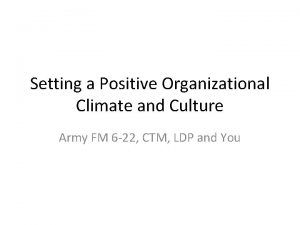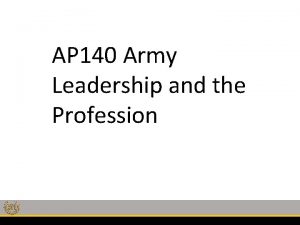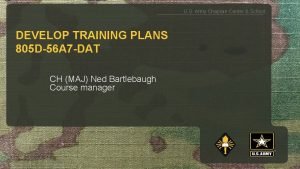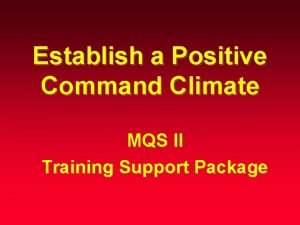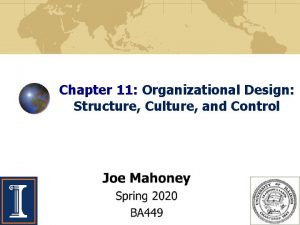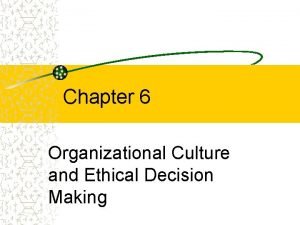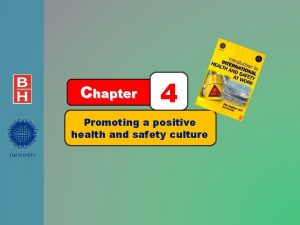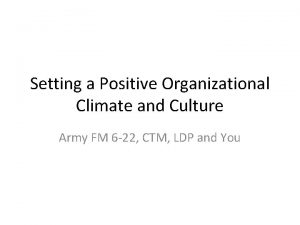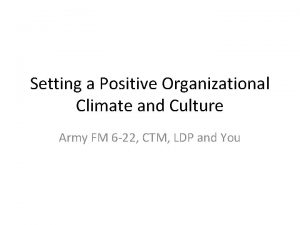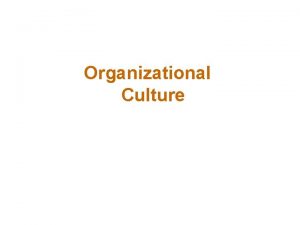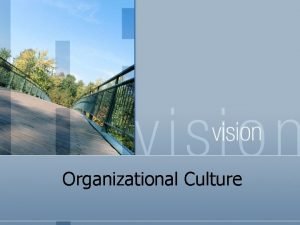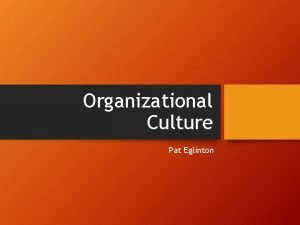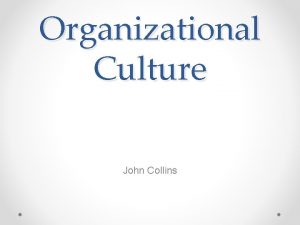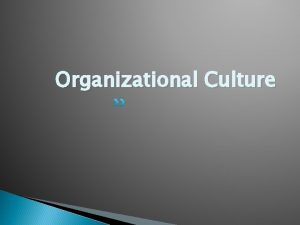Setting a Positive Organizational Climate and Culture Army
















- Slides: 16

Setting a Positive Organizational Climate and Culture Army FM 6 -22, CTM, LDP and You

Training Objective • Task: Understand the importance of setting a positive organizational climate and culture • Condition: Given a block of instruction taught by the AC for Leadership using FM 6 -22, the CTM, and LDP, followed by objective questions • Standard: Identify ways to create a positive organizational climate and culture in your organizations

Organizational Climate • How members feel about the organization • Comes from shared perceptions and attitudes about the organization’s daily functioning • Generally a short-term experience, depending on a network of personalities in an organization • Changes as people come and go

Positive Climate at The Citadel • “Good leaders strive to leave an organization better than they found it and expect other leaders to do the same” – FM 6 -22 – Create a positive environment – Prepare self – Develop others • “We have put on paper the essentials for teaching, training, leading, and inspiring others toward success” – CTM – – – Expectations Skills Feedback Consequences Growth • “The Citadel Experience is built upon The Citadel’s core values and is integrated across the four pillars of Academics, Military, Moral. Ethical, and Physical Effectiveness” -- LDP

Creating a Positive Climate • • Fairness and inclusiveness Open and candid communication Learning environment Assessing climate Dealing with ethics and climate Building teamwork and cohesion Encouraging initiative Demonstrating care for people Linkage between this, CTM & LDP?

Preparing Yourself • Expected and unexpected challenges – Physical fitness (Regimental PT) – Intellectual capacity, critical thinking, domain knowledge (LTPs) – Education—on and off duty (Grad certificate) • Expanding knowledge – Applying and experiencing what it means (Academies) • Developing self-awareness – Awareness of one’s traits, feelings, and behaviors (CTM and LDP)

Developing Others • Assessing needs – Expectations and Feedback • Developing on the job – Skills • Supporting professional and personal growth – Expectations, Skills, and Growth • Helping people learn – Skills and Feedback • Counseling, coaching, and mentoring – Expectations, Skills, Feedback, Consequences, and Growth • Building team skills and processes – Expectations, Skills, Feedback, Consequences, and Growth

LDP Learning Outcomes • 1 st Class Year military pillar learning outcomes associated with organizational climate and culture: – “Create command climate for standards and regulations compliance” – “Establish and assess a training environment that develops people” – “Create and assess a state of… collective resiliency in the unit”

Organizational Culture • A longer lasting and more complex set of shared experiences than climate • Consists of shared attitudes, values, goals, and practices that characterize the larger institution over time • Deeply rooted in long-held beliefs customs, and practices • Leaders use culture to let people know they are part of something bigger than just themselves

Culture • There are three different levels of culture – Artifacts • What individuals can see on the surface – Shared values • The significant values, morals, and beliefs claimed to be especially important by leaders in the organization – Basic assumptions • How situations or problems within the organization are treated after repetition

Your Battalion’s Culture • What artifacts are present in your battalion? – What do those artifacts represent to an upperclass male cadet? – An upperclass female cadet? – A fourthclass cadet? – A TAC? – A parent? – A non-Citadel affiliated visitor?

Your Battalion’s Culture • What shared values are present in your battalion? – To what degree are they aligned with The Citadel’s shared values? – To what degree are they consistent in each company? – To what degree are they consistent among all types of cadets? • • Upperclass and fourthclass? Contracted and not? Cadet athlete and not? Chain of command not?

Your Battalion’s Culture • What basic assumptions are present in your battalion? – What words describe how formations are conducted? – How are regulations violations dealt with? – How is positive performance reinforced? – What words describe how the fourthclass system is implemented? – What words describe how guard is conducted? Unit SOP

Leader Competencies • To create a positive climate, leaders: – Establish and maintain positive expectations and attitudes to support effective work behaviors and healthy relationships – Improve the organization while accomplishing the mission – Leave the organization better than it was when they arrived

Conclusion • FM 6 -22 dedicates significant time to concept of creating positive climate • Cadets see inverse relationship between positive climate and “leadership” – Attrition is the Mission – Hazing – Abusive treatment of women • CTM and LDP are Citadel-specific tools we have to counter this notion • CTM coupled with TAC leadership can turn this tide and illustrate true leadership for cadets

How Are We Currently Doing? • Current impediments to a Positive Climate? • Traditions, artifacts, phrases, etc? • Creating a positive climate is more than just the absence of a negative one • Proactive steps to take?
 A positive organizational climate
A positive organizational climate Edl positive school culture & climate
Edl positive school culture & climate Climate change 2014 mitigation of climate change
Climate change 2014 mitigation of climate change Army ethical reasoning model
Army ethical reasoning model Combined arms training strategies
Combined arms training strategies Command climate definition
Command climate definition Organizational design: structure, culture, and control
Organizational design: structure, culture, and control Organizational culture and ethical decision making
Organizational culture and ethical decision making Negative school culture
Negative school culture Promoting a positive health and safety culture
Promoting a positive health and safety culture Culture includes
Culture includes Continuous culture and batch culture
Continuous culture and batch culture American culture vs indian culture
American culture vs indian culture Stab and stroke culture
Stab and stroke culture Folk culture and popular culture venn diagram
Folk culture and popular culture venn diagram Folk culture and popular culture venn diagram
Folk culture and popular culture venn diagram Stroke culture method
Stroke culture method
